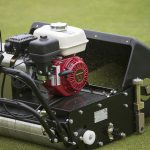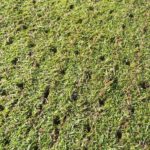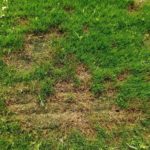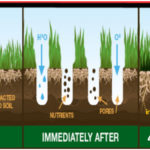Bowling Green Maintenance Tips by month
Performance Greenkeeping tasks for January
Essential Greenkeeping tasks for January include aeration, moss control, microbe boosting, disease prevention and keeping the surface clear of worm casts. Take advantage of my… Read more
Performance Greenkeeping tasks for December
Essential Greenkeeping tasks for December include aeration, moss control, microbe boosting, disease prevention and keeping the surface clear of worm casts. Read more
Performance Greens Program – How to Get Started Fast and Cheap
With the new bowling season bearing down on us fast, I’ve received a good few emails and calls asking me whether or not it’s worth… Read more
Performance Greenkeeping tasks for April
Essential Greenkeeping tasks for April include Scarification, moss control, microbe boosting, disease prevention and keeping the surface clear of worm casts. Now is the time… Read more
Defining Bowling Green Performance
Over 37 years of greenkeeping and teaching greenkeepers I have come to notice that bowling green performance comes down to just 3 major characteristics. Sounds… Read more
Performance Greenkeeping tasks for March
Essential Greenkeeping tasks for March include aeration, moss control, microbe boosting, disease prevention and keeping the surface clear of worm casts. Now is the time… Read more
Performance Greenkeeping tasks for November
Essential Greenkeeping tasks for November include aeration, disease prevention and keeping the surface clear of worm casts. Read more
Before and After
I had a nice email from a Bowls Central reader yesterday with before and after photos related to him starting to follow the advice on… Read more
Performance Greenkeeping Tasks for September
Greenkeeping Tasks for September and October have become to some degree a bit repetitive. This would be fine if the desired results followed, but in… Read more
Performance Greenkeeping tasks for August
August is upon us and the days are shortening noticeably already. Thought’s might already be turning to autumn and the plan for renovations of the… Read more
Performance Greenkeeping tasks for July
As if by magic we’ve zoomed past the longest day already, but, the nights won’t be drawing in, as my Mother used to say any… Read more
Performance Greenkeeping tasks for June
A lot of us experienced a very dry start to spring, but might now be regretting complaining about that as we are faced with seriously… Read more
Performance Greenkeeping tasks for May
A lot of us have experienced a very dry spring. In his article on the Performance Greenkeeping tasks for May, John takes account of the… Read more







Hi John,
we have some low points and bald patches lpd due to high sand content, what would you recommend as a top soil/sand mixture and what type of sand is best to mix, to make a acceptable soil patching solution.
Hi Ian
It’s probably best to use a 70/30 top-dressing mix for this, but you’ll also have to do some remedial work on the ldp areas. Some ideas here
Thanks
John
Hi, Built a putting green in my garden. 12″ gravel then 12″ sandy loam.( under lying soil is mostly blue clay) Over the years it has become shaded by trees on adjacent land.
I use a Webb hand push mower. At 7/8mm it looks good but is very slow to putt on, at 5/6mm it is ok to putt on, at 3/4mm it is really good but I struggle to keep the grass in good condition. I solid tine using a garden fork, I slit tine (herring bone) using a spade over the winter and scarify using an electric scarifier in spring.
I added worms for leather jacket control and use lawn sand a couple of times over the winter for moss control.
Any suggestions would be helpful. The green is 50sq yds. I buy feed etc in the garden center or on line.
Hi to any Greenkeeper,
The main problem with greens since the EU banned worm killer is castes. I believe there are 28 types of worm in the UK and only 3 make a caste hence the ban on killer. What is your solution in dealing with this problem. Nothing seems to effect them and brushing or swishing proves useless. Other Greenkeepers must encounter this nuisance. I have tried various commercial preventatives and none work. Hope I can obtain some sound advice.
Hi John, can you tell me the importance of rotating rinks and also the direction of play. We have members in our club who think they know everything and only want to use the same rinks in the same direction. We also have an issue with certain members leaving the mat down, after completing an end when practicing. This has burnt the grass in the past. Another issue is rolling bowls and not using a mat. Are these issues damaging our green.
November 14 2020 / John.
Re worm casts, I used to use a product called Worm Killer back in the early 1990 s. “Good stuff BUT”. The grass mowings, when composted & dug into vegetable plots was found to specifically carry the active chemical & taken up by root vegetables. It was then found in human livers causing serious ill heath. Hence the ban of this & many other products.
I have been using the the Bowls Central organic products, Compost Tea etc, since 2018 & have only the odd few worm casts in wet weather. This has all but eliminated thatch, root or dead foliage in the base the turf. If worms have nothing to gorge on they won’t be at the surface to cast.
It all but eliminates Chafer grubs & leatherjackets as well. We also have a playing surface second to none.
Frank, Bowls green keeper.